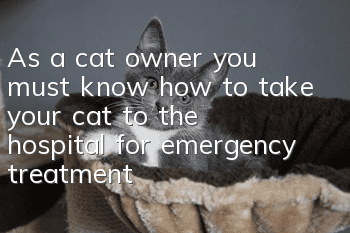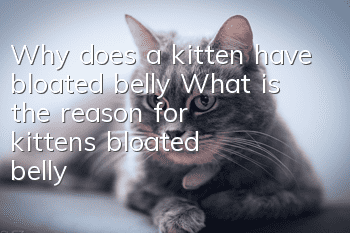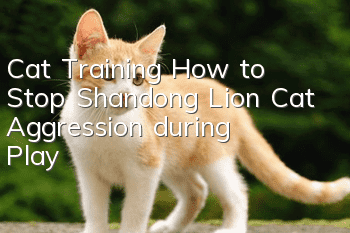Why should cats eat cat grass? The difference between cat grass and catnip

Many owners prepare cat grass for their cats. We all know that cat grass is helpful to cats’ health, but blindly eating cat grass is not a wise move. What some owners are even more troubled about is why their cat grass Still can’t plant it? Let’s learn how to plant and use cat grass.
1. Why should cats eat cat grass?
Cats’ instinct allows them to find some plants to eat when they are in the wild. These plant fibers stimulate the gastrointestinal tract, cause vomiting, clean hair balls and foreign objects in the stomach, and also enhance intestinal peristalsis to help excretion. But domestic cats cannot go out to eat grass, so many cats will nibble on domestic plants and some vegetables. These are manifestations of their own needs.
Someone asked: What kind of plant is called cat grass? Broadly speaking, any plant that contains folic acid, crude fiber, and is safe and non-toxic can be used as cat grass as long as it can be eaten by cats. Most of the cat grass we choose every day are plants from the Triticaceae family. You can buy some wheat, oat, rice, and alfalfa seeds and plant them yourself in a small flower pot at home. Pet stores sell some imported cat grass that contains cultivation soil in boxes or bags. Cats prefer the taste of this kind of cat grass, it is easy to grow, and the price is slightly higher.
2. How should you eat cat grass?
Some kittens start eating some cat grass in March, while others only eat it after they are 6 months old. There is no strict time limit for cats to eat cat grass. You just need to choose a reasonable time for cats to eat cat grass based on their growth, gastrointestinal development, and oral and tooth growth. Of course, if a cat is too young, such as a nursing kitten, it is best not to feed it cat grass.
In addition, when the cat’s gastrointestinal function is not good, such as gastrointestinal inflammation, flatulence, and accumulation of rotten flesh, giving it some cat grass can also induce vomiting or help expel food in the gastrointestinal tract, thereby alleviating uncomfortable symptoms. Of course, cat grass is cats’ favorite plant. Giving cats some cat grass to eat when they are nervous or stressed can also better relieve the cat’s stress, which is naturally beneficial to the health of pet cats.
3. How to grow cat grass?
Step one: Go to a store or a professional pet store to buy a set of equipment for growing cat grass. For example, culture soil, boxes, seeds and planting instructions. Before planting, you should read the planting instructions clearly and then start planting.
Step 2: Now you can plant the seeds in the soil. Generally speaking, cat grass will germinate in about a week. Depending on the amount you plant, you can determine how long it will take for your cat to eat it. In order to ensure that cats can eat for a long time, you should also pay attention to retaining the roots of cat grass and insist on transplanting.
The third step: Planting cat grass later is better thanSimpler. Just insert a few sections of cat grass directly into the moist soil, and it will be easy to survive, and the cat grass will sprout and grow quickly.
PS: Cat grass is a gramineous plant with long, narrow leaves and pointed tails. The color is green, ranging from light green to dark green, and the smell is grassy. It is worth noting that when picking cat grass seeds, you can pick them when they are brown and then plant them.
4. The difference between cat grass and catnip
Catnip: About half of cats are interested in the smell and like to scratch and bite it. Catnip is a plant that can cause hallucinations in cats. Some cats can cause temporary behavioral changes after eating it, such as sneezing, chewing, rubbing, rolling, meowing, etc. Some cats will chase imaginary mice after eating catnip, while others will sit blankly and stare blankly. In short, catnip does not substantially help cats’ health.
Cat grass: 1. After a cat eats cat grass, the cat grass turns over in the stomach, which can help vomit out hair balls. 2. Adding plant fiber can help cats digest and regulate gastrointestinal health. 3. Cat grass contains plant vitamin C and chlorophyll. 4. Soothes gastrointestinal discomfort, can help cats relieve minor gastrointestinal discomfort such as bloating, gas, etc.
If you think cat grass is more troublesome, some hair removal cream is a necessary choice. In fact, the functions of the two are similar, so if you don’t provide cat grass for your cat, you should eat some hair removal cream regularly.
- What causes cats to develop diarrhea after eating canned food?
- Is there a difference between cat paws and dog paw prints? How to tell the difference?
- Does your cat refuse to be groomed? This is very important to her!
- Why is the cat twitching?
- Can cat heart disease be cured? Blood pressure and radiographic examination of cat heart disease!
- If a kitten meows as soon as it's locked in the cage, that's because you're not doing something right.
- Can cats bask in the sun?
- What are the causes of shortness of breath in cats? Shortness of breath in cats should not be underestimated!
- Can cats eat chicken bones? Why?
- What is the problem if a cat has purulent eye droppings in its eyes? What should a poop remover do?



